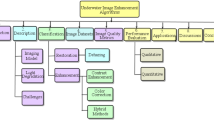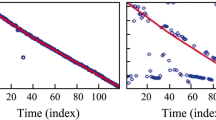Abstract
Underwater acoustic channels are recognized for being one of the most difficult propagation media due to considerable difficulties such as: multipath, ambient noise, time-frequency selective fading. The exploitation of sparsity contained in underwater acoustic channels provides a potential solution to improve the performance of underwater acoustic channel estimation. Compared with the classic l 0 and l 1 norm constraint LMS algorithms, the p-norm-like (l p ) constraint LMS algorithm proposed in our previous investigation exhibits better sparsity exploitation performance at the presence of channel variations, as it enables the adaptability to the sparseness by tuning of p parameter. However, the decimal exponential calculation associated with the p-norm-like constraint LMS algorithm poses considerable limitations in practical application. In this paper, a simplified variant of the p-norm-like constraint LMS was proposed with the employment of Newton iteration method to approximate the decimal exponential calculation. Numerical simulations and the experimental results obtained in physical shallow water channels demonstrate the effectiveness of the proposed method compared to traditional norm constraint LMS algorithms.
Similar content being viewed by others
References
Akyildiz I, Pompili D, Melodia T (2005). Underwater acoustic sensor networks: Research challenges. Ad Hoc Networks, 3(3), 257–279.
Angelosante D, Bazerque JA, Giannakis GB (2010). Online adaptive estimation of sparse signals: where RLS meets the l1-norm. IEEE Trans. Signal Process, 58(7), 3436–3447.
Chitre MS, Shahabodeen S, Stojanovic M (2008). Underwater acoustic communications and networking: Recent advances and future challenges. Marine Technology Society, 42(1), 103–116.
Cotter SF, Rao BD (2002). Sparse channel estimation via matching pursuit with application to equalization. IEEE Trans. Commun., 50(3), 374–377.
Gu Y, Jin J, Mei J (2009). l0 norm constraint LMS algorithm for sparse system identification. IEEE Signal Processing Letters, 16(9), 774–777.
Hosein M, Massoud BZ, Christian J (2009). A fast approach for over complete sparse decomposition based on smoothed l0 norm. IEEE Trans Signal Process, 57(1), 289–301.
Jin J, Gu Y, Mei S (2010). A stochastic gradient approach on compressive sensing signal reconstruction based on adaptive filtering framework. IEEE J. Sel. Topics Signal Process, 4(2), 409–420.
Kalouptsidis N, Mileounis G, Babadi B, Tarokh T (2011). Adaptive algorithms for sparse system identification. Signal Processing, 91(8), 1910–1919.
Li W, Preisig JC (2007). Estimation of rapidly time-varying sparse channels. IEEE J. Ocean. Eng., 32(4), 927–939.
Naylor PA, Cui J, Brookes M (2006). Adaptive algorithms for sparse echo cancellation. Signal Processing, 86(6), 1182–1192.
Rao BD, Delgado KK (1999). An affine scaling methodology for best basis selection. IEEE Trans. Signal Process, 47(1), 187–200.
Richard FK (1971). Improved Newton iteration for integral roots. Math. Comput. 25(114), 299–304.
Shi K, Shi P (2010). Convergence analysis of sparse LMS algorithms with l1-norm penalty based on white input signal. Signal Processing, 90(12), 3289–3293.
Shi K, Shi P (2011). Adaptive sparse Volterra system identification with l0-norm penalty. Signal Processing, 91(10), 2432–2436.
Singer AC, Nelson JK, Kozat SS (2009). Signal processing for underwater acoustic communications. IEEE Communications Magazine, 47(1), 90–96.
Stojanovic M (2005). Retrofocusing techniques for high rate acoustic communications. J. Acoust. Soc. Am., 117(3), 1173–1185.
Stojanovic M (2008). Efficient processing of acoustic signals for high-rate information transmission over sparse underwater channels. Physical Communication, 1(2), 146–161.
Taylor GD (1970). Optimal starting approximations for Newton’s method. J. Approximation Theory, 3(2), 156–163.
Wu FY, Tong F (2013). Gradient optimization p-norm-like constraint LMS algorithm for sparse system estimation. Signal Processing, 93, 967–971.
Zeng WJ, XU W (2012). Fast estimation of sparse doubly spread acoustic channels. Journal of Acoustical Society of America, 131(1), 303–317.
Zhang YB, Zhao JW, GIO YC, LI JM(2011). Blind adaptive MMSE equalization of underwater acoustic channels based on the linear prediction method. Journal of Marine Science and Application, 10, 113–120.
Author information
Authors and Affiliations
Corresponding author
Additional information
Foundation item: Supported by the National Natural Science Foundation of China (No.11274259) and the Specialized Research Foundation for the Doctoral Program of Higher Education of China (No.20120121110030).
Feiyun Wu received his B.S. degree in Applied Physics from Nanchang University Nanchang, China in 2006, M.S degree in Detection Technology and Automation Devices from Sun Yat-Sen University, Guangzhou, China in 2010. From 2006 to 2008, he worked as a college lecturer in Electronic Engineering Department of Nanchang University Gongqing College. Now he is a Ph.D candidate in the Department of Applied Marine Physics and Engineering, Xiamen University, China. His research interests include adaptive signal processing for underwater acoustics communications, compressed sensing, ICA and Wavelet algorithms and their applications.
Yuehai Zhou received his B.S. degree in Department of Applied Mrine Physics and Engineering, Xiamen University, China in 2006. Now he is a master studnet in Department of Applied Mrine Physics and Engineering, Xiamen University, and will recieve his M.S. degree at July, 2013. His research interests include R&D of underwater acoustic modem and time reversal underwater acoustic communications.
Feng Tong received his PhD in underwater acoustics at Xiamen University, China in 2000. From 2000 to 2002, he worked as a post-doctoral fellow in the Department of Radio Engineering, Southeast University, China. Since 2003, he has been a research associate at the Department of Manufacturing Engineering and Engineering Management, City University of Hong Kong for one and a half year. From Dec 2009 to Dec 2010 He was a visiting scholar in Department of Computer Science and Engineering, University of California San Diego, USA. Currently he is a professor with the Department of Applied Marine Physics and Engineering, Xiamen University, China. His research interests focus on underwater acoustic communication and acoustic signal processing. He is a member of IEEE, ASC (Acoustical Society of China) and CSIS (China Ship Instrument Society). He serves on the editorial board for the Journal of Marine Science and Application.
Ryan Kastner is currently a professor in the Department of Computer Science and Engineering at the University of California, San Diego. He received a PhD in Computer Science at UCLA. His current research interests reside in the realm of embedded system design, in particular, the use of reconfigurable computing devices for digital signal processing and underwater acoustic networking. He is a member of numerous conference technical committees including the International Conference on Computer Aided Design (ICCAD), the Design Automation Conference (DAC), Design, Automation and Test in Europe, GLOBECOM, the International Conference on Computer Design (ICCD), the Great Lakes Symposium on VLSI (GLSVLSI), the International Conference on Engineering of Reconfigurable Systems and Algorithms (ERSA) and the International Symposium on Circuits and Systems (ISCAS). He serves on the editorial board for the Journal of Embedded Computing.
Rights and permissions
About this article
Cite this article
Wu, F.Y., Zhou, Y.H., Tong, F. et al. Simplified p-norm-like constraint LMS algorithm for efficient estimation of underwater acoustic channels. J. Marine. Sci. Appl. 12, 228–234 (2013). https://doi.org/10.1007/s11804-013-1189-7
Received:
Revised:
Published:
Issue Date:
DOI: https://doi.org/10.1007/s11804-013-1189-7




